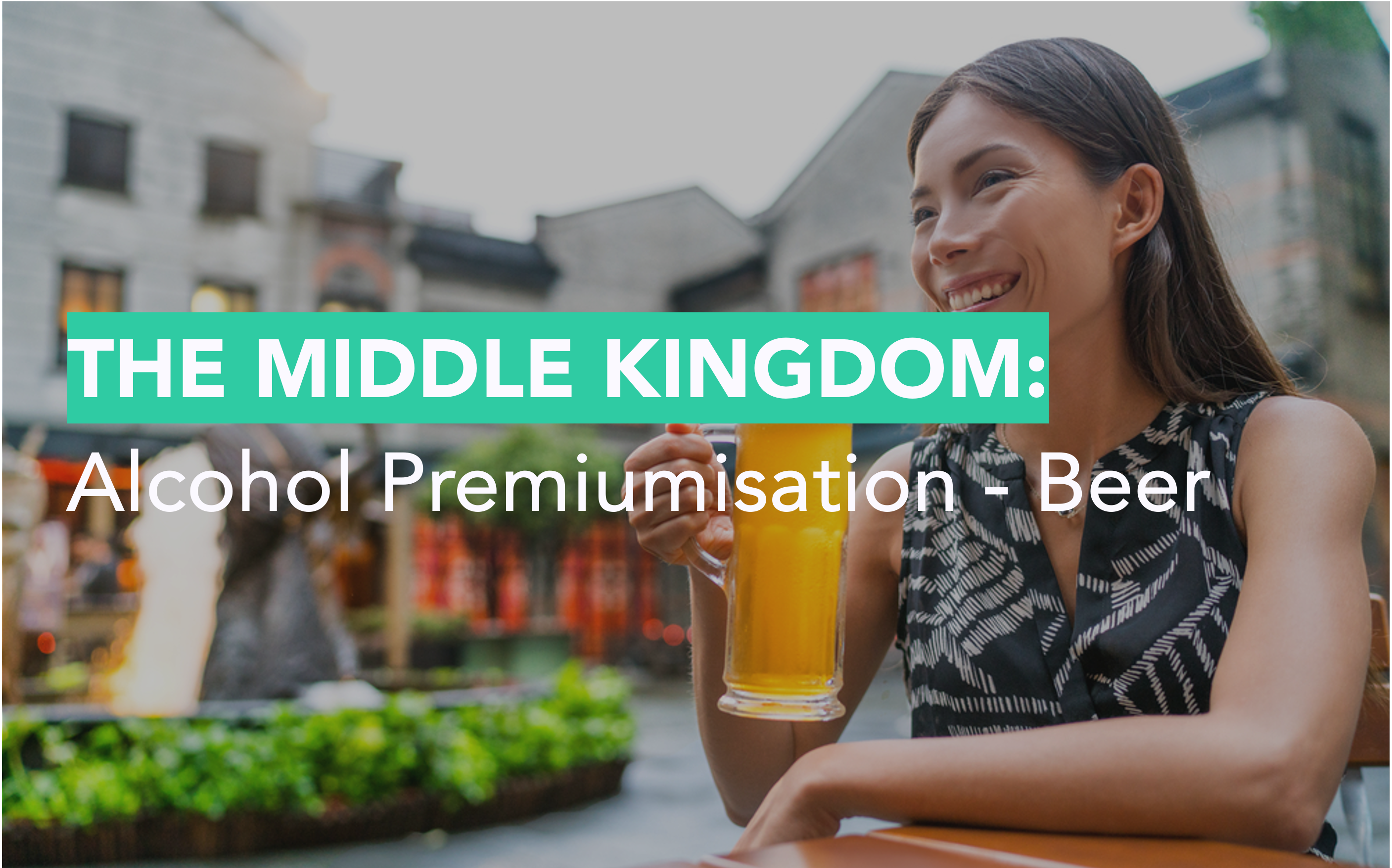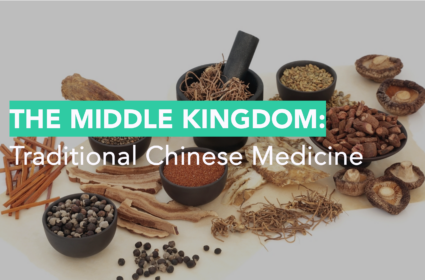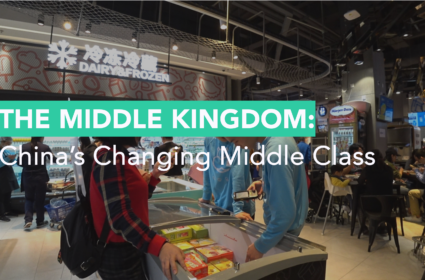Cheers! 干杯! Alcohol Premiumisation in China: The Spirit Round
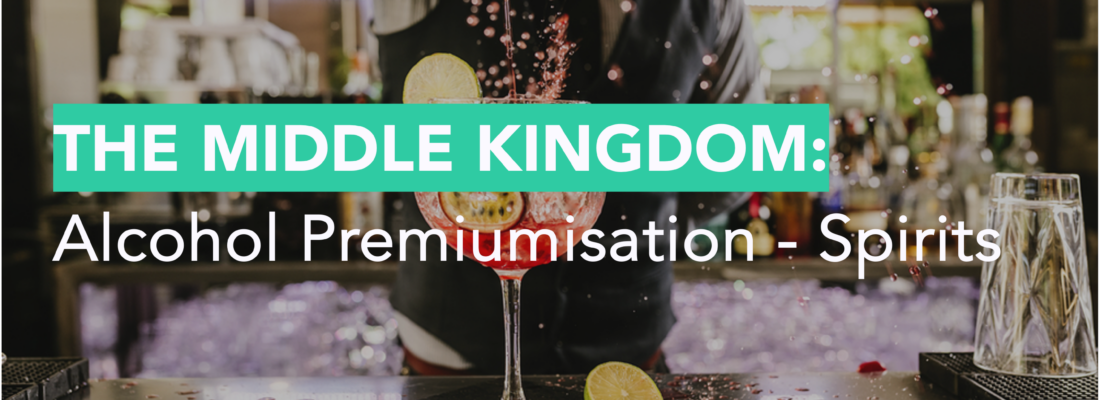
This article is part of our series on The Middle Kingdom. You can view the full series or download the report.
Welcome to the Middle Kindom
The Chinese name of China is 中国 (pronounced ‘zhong guo’) which translates literally to ‘Middle Kingdom’. This dates back to ~1000BC when the Chinese were in relative isolation from the rest of the world, separated by the Himalayan mountains in the southwest, the Gobi Desert to the north and the Pacific Ocean to the east. As such, Chinese people assumed they were at the centre of the world, and aptly named their country the ‘Middle Kingdom.’ Our goal in this blog is to provide everyone with bite-sized insights into China’s Culture, Customs, and Consumers.
Cheers! 干杯! Alcohol is going premium in China: Spirits
State of Play – Spirits
Like beer [see our previous blog], the spirits category is changing rapidly in China, albeit in a different context. Baijiu, a liquor distilled from sorghum, has strong cultural significance in China, and remains the most popular spirit in the market. The liquor is often synonymous with the luxury baijiu brands Kweichow Moutai and Wuliangye which consistently rank highly in the world’s most valuable spirits owing to the reputation of the brands as opulent gifts consumed in the most formal occasions such as business dinners and state banquets. It’s worth noting many perceive baijiu to be a men’s drink, given these consumptions occasions as well as its high ABV (typically between 35% and 60%) and resulting strong taste.
In recent years, this prestigious image of baijiu has only fuelled the desire for lighter and more modern spirits that remain premium but feel more appropriate for the everyday consumption moments of the younger Chinese consumer. (According to ISWR, premium spirits volumes (excluding national spirits) rose by +7% in H1 2023 versus H1 2022.) Brandy and whisky are growing categories with millennials thanks to the compelling European heritage and culture many of the brands have to offer.
The sip and savour behaviour associated with brand and whisky also helps to elevate the premium perceptions of these spirits – 39% of urban affluent Chinese alcohol drinkers said they spent over RMB500 on a bottle of alcohol to drink at home in the first half of 2021. For other spirits, cocktails are emerging as a strong entry point for consumers who enjoy the fun creative visual experience and sweeter flavours that mask the strong taste of alcohol. As of 2023, brandy is the most produced spirit in China after national spirits, followed by (in order) whisky, vodka, rum and gin.
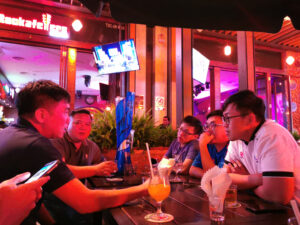
The Spirit Brands Winning in China
- Hennessy has had a long history in China but has become a hallmark of premium spirits in the market through its localisation efforts. One such example being their “Rediscover the flavour of China” initiative of partnering with local chefs to explore the connection between Chinese cuisine and the layered flavours of Cognac. The brand cleverly taps into the existing consumer behaviour of alcohol consumption with food and shows consumers how to pair the ‘eau de vie’ with typical Chinese dishes.
- Johnnie Walker has only has three Houses of Johnnie Walker outside of Scotland and three of them are in China. Located in Beijing, Shanghai and Chengdu, each House is a part-museum, part-gallery, part-life style space that offers its members complete immersion into the Johnnie Walker world. Patrons enjoy a host of exclusive benefits such as VIP tastings, fine dining experiences and personal shopping.
- Pernod Ricard and Diageo have opened distilleries in Sichuan and Yunnan respectively, and both companies have plans to launch Chinese whiskeys tailored to the Chinese consumer. This will do a lot for making whiskey more mainstream, tapping into national pride, and leveraging the familiarity of local ingredients and flavours.
- Aforementioned baijiu brand Kweichow Moutai has caused a lot of media hype in recent years with a string of collaborations aimed at capturing the younger consumer. In 2022, they partnered with dairy brand, Mengniu, to launch the first ever baijiu infused ice cream and last year, Moutai partnered with local coffee chain Luckin Coffee to bring consumers the Moutai Latte. At 38 RMB (US$5.3), the collab offered many consumers a chance to try the luxury liquor for the first time (a standard bottle of Moutai baijiu retails at RMB 1,499 or US$205). Despite the success of these campaigns – Luckin’ Coffee recorded sales of more than 5 million cups a day – Maotai announced that they would cease collaborations in order to preserve their luxury identity.
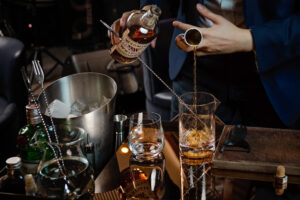
The So What – what can spirit brands do to elevate premium perceptions and connect with Chinese consumers?
Beyond the three suggestions in our beer article [insert link to article again], which are still very relevant for spirit brands. Consider…
- Tapping into the creative and eager Gen-Zers. Younger Chinese consumers consider themselves global citizens and are looking to curate their identities through the brands they engage with – this includes alcohol! Leaning into a heritage brand story, exclusivity (limited edition products), and encourage them to develop their own rituals will have enormous value for Gen-Z and even millennial consumers.
- Creating an immersive experience. There are so many great examples in this article of brands leveraging experience which shows how crucial it is in winning over Chinese consumers. However, experience doesn’t have mean brick & mortar. Consider how to create that immersive experience at home via the pack and product. How might we whisk the drinker away into the world of your brand as if they were stepping into a House of Johnnie Walker?


